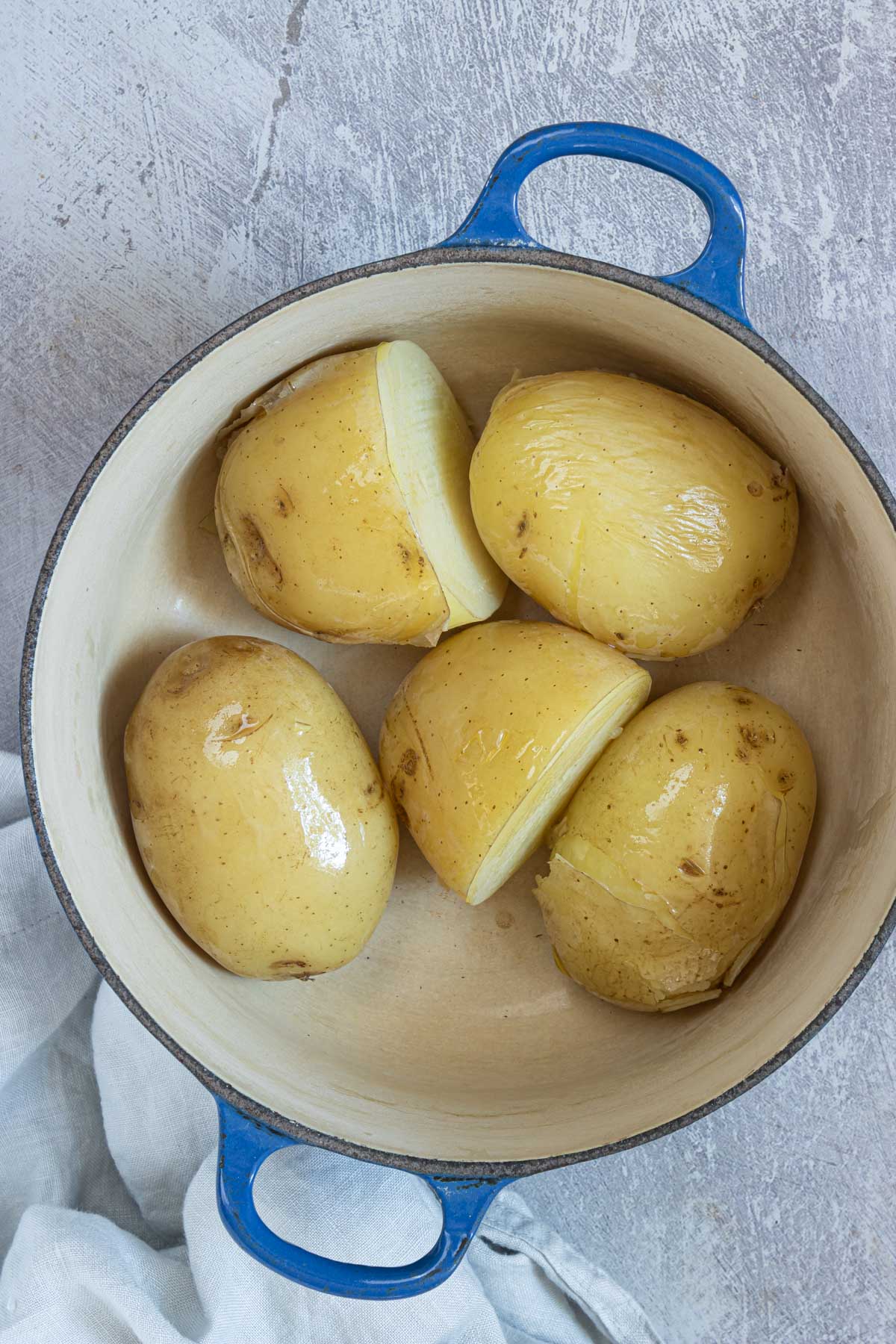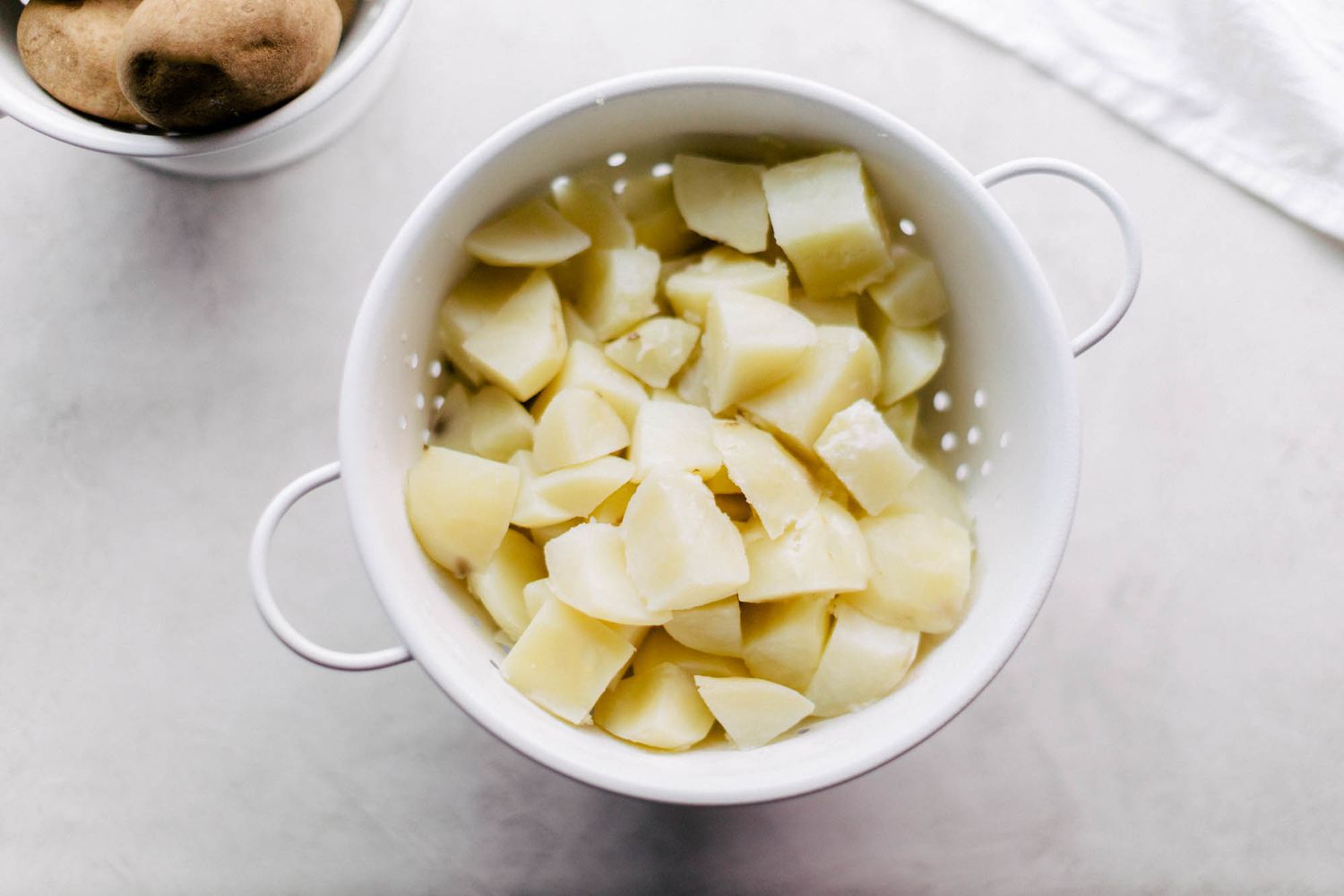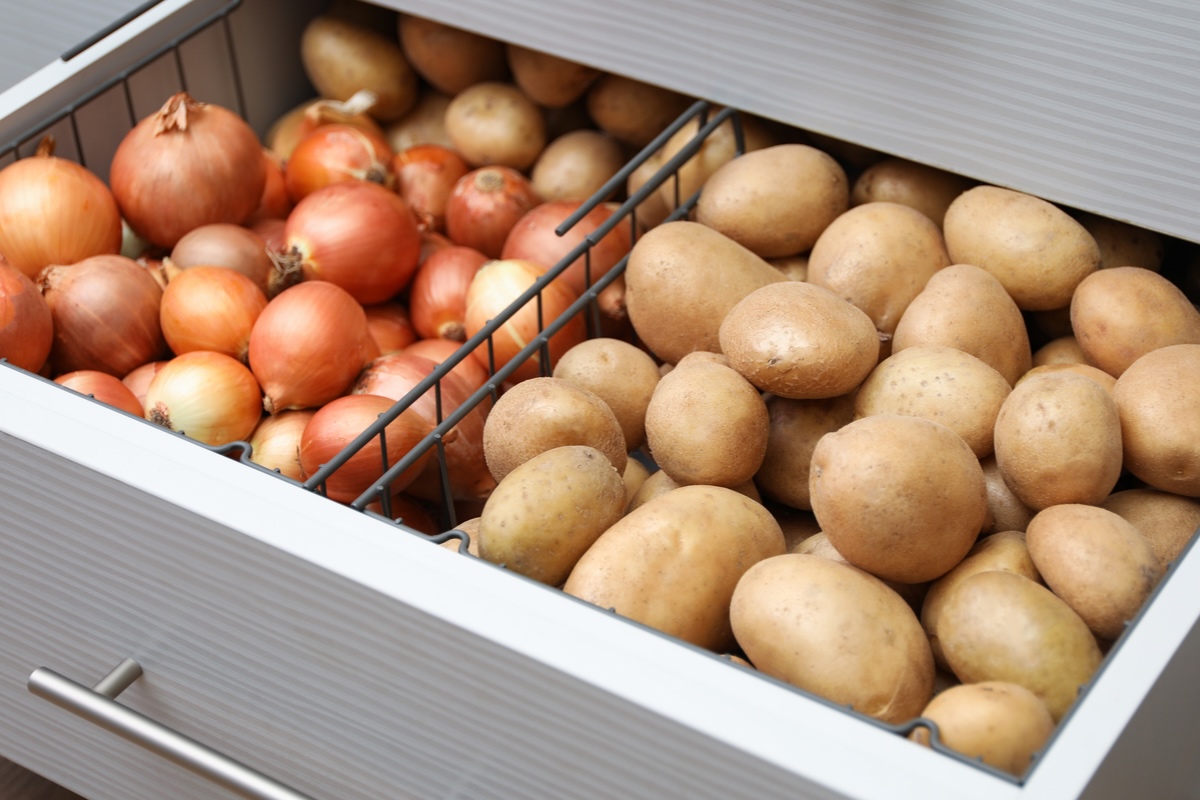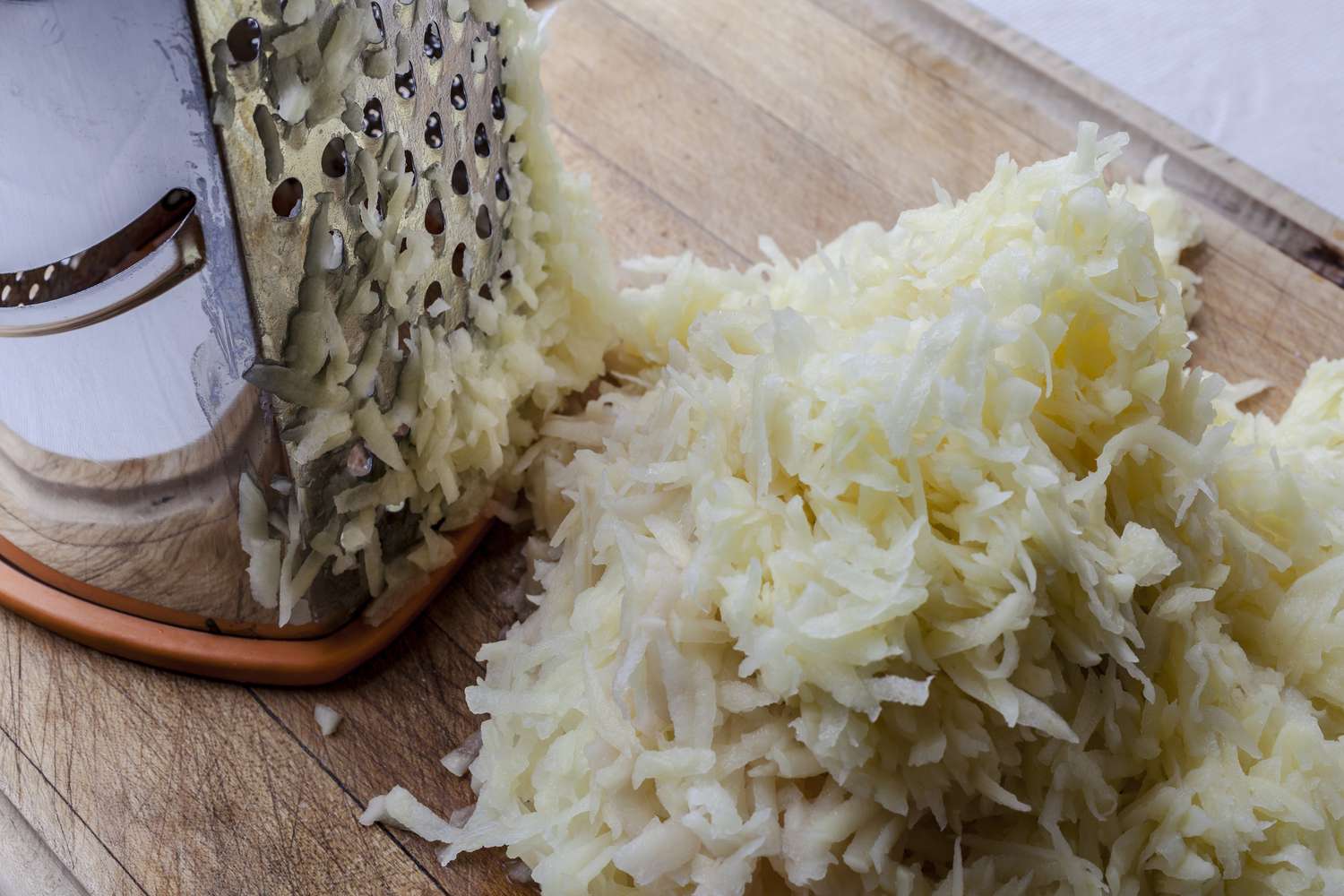

Articles
How To Store Potato Soup
Modified: August 22, 2024
Learn how to properly store potato soup to keep it fresh and flavorful. Read our articles for useful tips and tricks.
(Many of the links in this article redirect to a specific reviewed product. Your purchase of these products through affiliate links helps to generate commission for Storables.com, at no extra cost. Learn more)
Introduction
When it comes to hearty soups, few can rival the comforting and delicious flavors of potato soup. Whether you’ve made a large batch or have leftover soup from a previous meal, knowing how to store potato soup properly is essential to ensure its freshness and taste. In this article, we’ll guide you through the step-by-step process of storing potato soup, whether it’s in the refrigerator or freezer.
The key to maintaining the quality of your potato soup lies in proper storage techniques. By following these guidelines, you can extend the shelf life of your soup without compromising its flavor or texture. So, let’s dive in and learn how to store potato soup like a pro!
Key Takeaways:
- Properly storing potato soup is crucial for maintaining its freshness and flavor. Choosing the right containers, cooling the soup properly, and storing it in the refrigerator are key steps in preserving its quality for a few days.
- Freezing the potato soup in appropriate containers and maintaining the freezer at the recommended temperature allows you to keep the soup for up to three months without sacrificing taste. Thaw and reheat the soup properly to enjoy its comforting flavors.
Read more: How To Store Soup
Step 1: Choosing the Right Containers
When storing potato soup, it’s important to select containers that are suitable for both refrigerator and freezer storage. Here are some factors to consider when choosing the right containers:
- Material: Opt for containers made of food-grade materials such as glass or BPA-free plastic. Avoid using containers made of metal, as they can react with the acidic components in the soup.
- Size: Choose containers that can accommodate the portion size you plan to store. It’s best to use smaller containers to avoid unnecessary wastage when thawing and reheating.
- Airtightness: Look for containers with a tight-fitting lid to prevent air from entering and moisture from escaping, which can lead to freezer burn or spoilage. This will help preserve the flavor and texture of the potato soup.
If you prefer to use glass jars, leave some headspace at the top to allow for expansion during freezing. On the other hand, if using plastic containers, ensure they are labeled as freezer-safe to prevent cracking or warping when exposed to extreme temperatures.
Additionally, consider using containers with transparent sides to easily identify the contents and prevent confusion in your freezer or refrigerator. Remember to label each container with the date of storage, as this will help you keep track of the freshness of the soup.
Now that you’ve chosen the right containers, let’s move on to the next step: cooling the soup properly to ensure its longevity.
Step 2: Cooling the Soup Properly
Before storing potato soup, it’s crucial to cool it down properly to prevent bacterial growth and maintain its quality. Follow these steps to cool your soup effectively:
- Divide into smaller portions: If you have a large batch of potato soup, divide it into smaller portions. This allows the soup to cool more quickly and evenly.
- Transfer to shallow containers: Transfer the soup into shallow containers to increase the surface area exposed to cool air. This helps to lower the temperature more rapidly. Make sure to leave some space at the top to accommodate any expansion during cooling and freezing.
- Place in an ice bath: For faster cooling, place the containers of soup in a larger container filled with ice water. Stir occasionally to distribute heat evenly. This method can significantly reduce the cooling time.
- Avoid leaving it at room temperature: Do not leave the soup at room temperature for more than two hours, as bacteria can multiply rapidly in the “danger zone” of 40°F to 140°F (4°C to 60°C).
Remember, cooling the soup properly is vital to prevent the growth of harmful bacteria and maintain its freshness. Once the soup has cooled down to room temperature, it’s time to move on to the next step: storing it in the refrigerator.
Step 3: Storing in the Refrigerator
Once your potato soup has cooled down, it’s time to store it in the refrigerator if you plan to consume it within a few days. Follow these steps to ensure proper storage:
- Label and date the containers: Before placing the soup in the refrigerator, it’s important to label each container with the date of storage. This will help you keep track of its freshness.
- Place in the refrigerator: Put the containers of potato soup in the refrigerator as soon as possible after cooling. Make sure to store them away from raw meat or other potentially cross-contaminating ingredients.
- Consume within 3-4 days: Potato soup stored in the refrigerator should be consumed within 3-4 days to ensure optimal freshness and taste. After this period, the soup may start to develop off-flavors or spoil.
It’s important to note that if you notice any signs of spoilage such as an unusual odor, mold growth, or off-color, discard the soup immediately. It’s better to be safe than sorry when it comes to food safety.
If you anticipate that you won’t be able to consume the potato soup within a few days, it’s time to move on to the next step: freezing the soup for longer-term storage.
Store potato soup in an airtight container in the refrigerator for up to 3-4 days. To freeze, let it cool completely, then transfer to a freezer-safe container and store for up to 3 months. Thaw in the refrigerator before reheating.
Step 4: Freezing the Potato Soup
If you have a surplus of potato soup or want to keep it for a longer period, freezing is the ideal option. Follow these steps to freeze the soup properly:
- Cool the soup completely: Ensure that the potato soup is completely cooled down before freezing. This helps to maintain the quality and prevent the formation of ice crystals.
- Transfer to freezer-safe containers: Transfer the soup into freezer-safe containers, leaving some headspace for expansion. You can use airtight plastic containers, resealable freezer bags, or even freezer-safe glass jars. Remember to label each container with the date of storage.
- Remove air pockets: If using resealable freezer bags, gently press out any excess air before sealing the bags. This step helps to prevent freezer burn and maintain the soup’s flavor.
- Stack containers for optimal space utilization: Place the containers in the freezer, making sure they are stacked securely and won’t topple over. This will help optimize space and ensure efficient airflow for even freezing.
- Store at 0°F (-18°C) or below: Set the freezer to the recommended temperature of 0°F or below (-18°C) to keep the soup properly frozen. This temperature ensures that the soup remains safe to eat and maintains its quality for an extended period.
Potato soup can be safely stored in the freezer for up to three months. However, for the best taste and texture, it is recommended to consume it within 1-2 months. Now that you have successfully frozen the soup, let’s move on to the final step: thawing and reheating!
Read more: How To Store Tomato Soup
Step 5: Thawing and Reheating the Frozen Soup
When you’re ready to enjoy the frozen potato soup, follow these steps to thaw and reheat it:
- Thaw in the refrigerator: The safest way to thaw the frozen potato soup is by transferring it from the freezer to the refrigerator. Allow the soup to thaw overnight or for approximately 24 hours. This slow thawing method helps maintain the soup’s texture and flavor.
- Use the defrost setting on the microwave: If you’re short on time, you can use the defrost setting on your microwave to thaw the soup. Be cautious as microwaving for too long can result in uneven heating and affect the quality.
- Reheat on the stovetop: Once the soup is thawed, it’s time to reheat it. Pour the thawed soup into a pot and heat it over medium-low heat, stirring occasionally to prevent sticking or scorching. Heat until the soup is fully warmed through.
- Reheat in the microwave: If you prefer a quicker method, you can reheat the thawed soup in the microwave. Place the soup in a microwave-safe bowl and heat it on high in one-minute increments, stirring in between until the desired temperature is reached.
- Taste and adjust seasoning if necessary: After reheating, taste the soup and adjust the seasoning if needed. Add any additional herbs, spices, or salt to enhance the flavor to your liking.
Remember, when reheating the soup, it’s important to ensure it reaches a safe internal temperature of 165°F (74°C) to kill any remaining bacteria and ensure food safety.
Now that you’ve successfully thawed and reheated the frozen potato soup, it’s ready to be served! Enjoy the comforting flavors and nourishing warmth of your stored potato soup.
Conclusion
Properly storing potato soup is essential to maintain its freshness, flavor, and quality. By following the step-by-step guide outlined in this article, you can ensure that your potato soup remains delicious and safe to consume whether you store it in the refrigerator or freezer.
Choosing the right containers, cooling the soup properly, and storing it in the refrigerator are key steps in preserving the freshness of the soup for a few days. If you have a surplus or want to store the soup for an extended period, freezing is the best option. Freezing the soup in appropriate containers and maintaining the freezer at the recommended temperature allows you to keep the soup for up to three months without sacrificing taste.
When it’s time to enjoy the frozen potato soup, thawing it properly either in the refrigerator or using the microwave’s defrost setting is crucial. Reheating the thawed soup on the stovetop or in the microwave ensures it is heated evenly.
Remember, always use your best judgment when it comes to food safety. If you notice any signs of spoilage or are unsure about the quality of the stored potato soup, it’s safest to discard it.
With the knowledge gained from this article, you can confidently store your potato soup, making it a convenient and delicious meal to enjoy whenever you desire. So go ahead and savor the warmth and comfort of a bowl of homemade potato soup, knowing that you have the skills to store it properly for future enjoyment.
Frequently Asked Questions about How To Store Potato Soup
Was this page helpful?
At Storables.com, we guarantee accurate and reliable information. Our content, validated by Expert Board Contributors, is crafted following stringent Editorial Policies. We're committed to providing you with well-researched, expert-backed insights for all your informational needs.















0 thoughts on “How To Store Potato Soup”